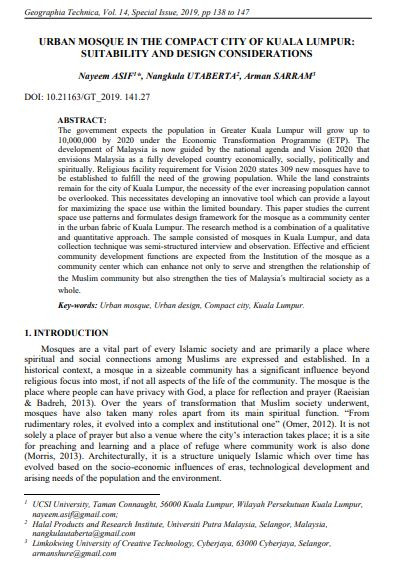
The government expects the population in Greater Kuala Lumpur will grow up to
10,000,000 by 2020 under the Economic Transformation Programme (ETP). The
development of Malaysia is now guided by the national agenda and Vision 2020 that
envisions Malaysia as a fully developed country economically, socially, politically and
spiritually. Religious facility requirement for Vision 2020 states 309 new mosques have to
be established to fulfill the need of the growing population. While the land constraints
remain for the city of Kuala Lumpur, the necessity of the ever increasing population cannot
be overlooked. This necessitates developing an innovative tool which can provide a layout
for maximizing the space use within the limited boundary. This paper studies the current
space use patterns and formulates design framework for the mosque as a community center
in the urban fabric of Kuala Lumpur. The research method is a combination of a qualitative
and quantitative approach. The sample consisted of mosques in Kuala Lumpur, and data
collection technique was semi-structured interview and observation. Effective and efficient
community development functions are expected from the Institution of the mosque as a
community center which can enhance not only to serve and strengthen the relationship of
the Muslim community but also strengthen the ties of Malaysia’s multiracial society as a
whole.
I agree to the terms outlined below:
You agree to upload and assign Mosqpedia Database the rights to use the content worldwide and in perpetuity across all current and future media platforms. Mosqpedia Database may edit, copy, adapt and translate your contribution.
The content will be distributed under the Creative Commons Attribution-Deed – Attribution-NonCommercial-NoDerivatives 4.0 International – Creative Commons
All data will be stored in line with data protection regulations.